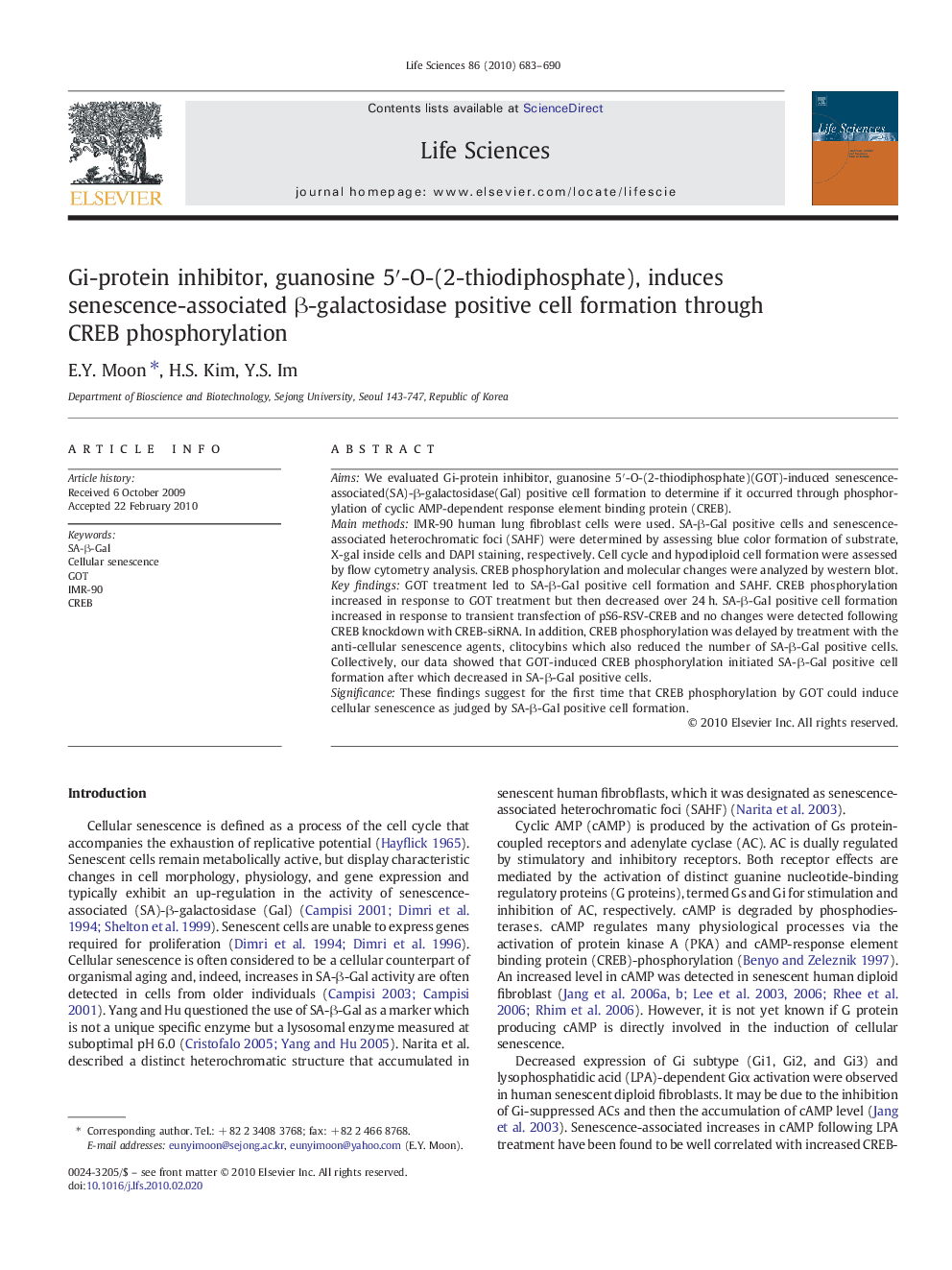| کد مقاله | کد نشریه | سال انتشار | مقاله انگلیسی | نسخه تمام متن |
|---|---|---|---|---|
| 2552362 | 1560703 | 2010 | 8 صفحه PDF | دانلود رایگان |

AimsWe evaluated Gi-protein inhibitor, guanosine 5′-O-(2-thiodiphosphate)(GOT)-induced senescence-associated(SA)-β-galactosidase(Gal) positive cell formation to determine if it occurred through phosphorylation of cyclic AMP-dependent response element binding protein (CREB).Main methodsIMR-90 human lung fibroblast cells were used. SA-β-Gal positive cells and senescence-associated heterochromatic foci (SAHF) were determined by assessing blue color formation of substrate, X-gal inside cells and DAPI staining, respectively. Cell cycle and hypodiploid cell formation were assessed by flow cytometry analysis. CREB phosphorylation and molecular changes were analyzed by western blot.Key findingsGOT treatment led to SA-β-Gal positive cell formation and SAHF. CREB phosphorylation increased in response to GOT treatment but then decreased over 24 h. SA-β-Gal positive cell formation increased in response to transient transfection of pS6-RSV-CREB and no changes were detected following CREB knockdown with CREB-siRNA. In addition, CREB phosphorylation was delayed by treatment with the anti-cellular senescence agents, clitocybins which also reduced the number of SA-β-Gal positive cells. Collectively, our data showed that GOT-induced CREB phosphorylation initiated SA-β-Gal positive cell formation after which decreased in SA-β-Gal positive cells.SignificanceThese findings suggest for the first time that CREB phosphorylation by GOT could induce cellular senescence as judged by SA-β-Gal positive cell formation.
Journal: Life Sciences - Volume 86, Issues 17–18, 24 April 2010, Pages 683–690